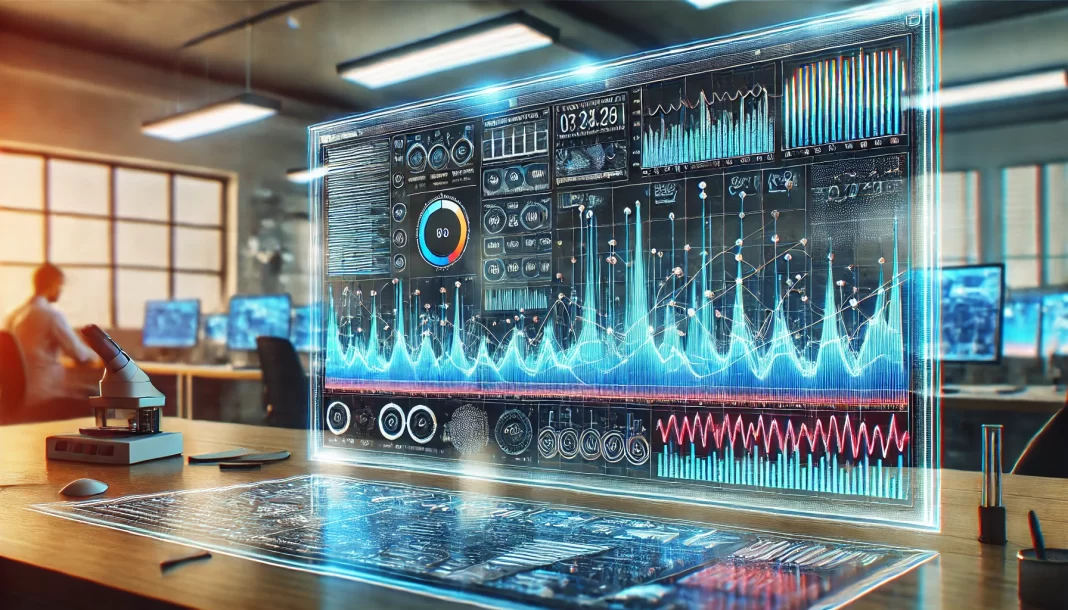When it comes to tracking data trends and visualizing information over time, the strip chart is an unsung hero. Despite its simplicity, this chart type is a powerful tool for various industries. Whether you’re analyzing lab experiments, monitoring industrial processes, or presenting business data, the strip chart provides a straightforward way to track changes and uncover insights.
In this blog post, we’ll explore what a strip chart is, how it works, its practical applications, and why it’s an essential tool for anyone dealing with time-based data.
What Is a Strip Chart?
A strip chart is a data visualization tool used to display changes in variables over time. It typically presents data as a continuous line or as dots plotted along a single axis, showing trends or variations clearly and concisely. It is widely used in time-series analysis to monitor values as they fluctuate.
Strip charts are particularly useful in scenarios where real-time monitoring is crucial. For example, in industrial settings, they can continuously record temperatures, pressures, or other operational metrics.
How Does a Strip Chart Work?
A strip chart works by plotting data on two axes:
- Time (x-axis): Shows the progression of time in seconds, minutes, hours, or longer intervals.
- Data (y-axis): Represents the variable being monitored, such as temperature, pressure, or sales figures.
As time progresses, new data points are plotted, forming a continuous “strip” of information that grows in real time. This allows users to monitor trends and detect changes at a glance.
Today, digital strip charts have largely replaced their traditional paper-based counterparts. These modern versions are more flexible, offering features like automated alerts, zoom functionality, and easy data sharing.
Why Are Strip Charts Important?
The versatility and simplicity of strip charts make them an invaluable tool for visualizing time-based data. Here are some key reasons why they’re essential:
1. Real-Time Monitoring
Strip charts excel in providing real-time data visualization. This is critical in environments like hospitals, where doctors and nurses rely on strip charts to monitor patients’ vital signs.
2. Pattern Recognition
By showing continuous data, strip charts make it easy to identify trends, patterns, or anomalies. This is particularly useful in industrial processes, where early detection of irregularities can prevent costly disruptions.
3. User-Friendly Design
Unlike complex graphs, strip charts are straightforward and intuitive. Even those with minimal technical expertise can quickly interpret the information.
Practical Applications of Strip Charts
Strip charts are used in a wide variety of fields. Below are some common applications:
1. Healthcare
In medical settings, strip charts monitor patients’ vital signs such as heart rate, blood pressure, and oxygen levels. These charts enable healthcare providers to act promptly when abnormalities occur.
2. Industrial Processes
Manufacturing facilities use strip charts to track operational metrics like temperature, pressure, and flow rates. The continuous monitoring ensures that machines are functioning efficiently and within safe parameters.
3. Environmental Monitoring
Environmental scientists rely on strip charts to track changes in air quality, water levels, or weather patterns. The data captured helps in predicting future trends and mitigating risks.
4. Research and Development
In labs, strip charts are used to observe changes in variables during experiments, such as tracking temperature variations in a chemical reaction or measuring electrical signals over time.
Digital vs. Traditional Strip Charts
Technological advancements have transformed strip charts from paper-based systems to digital formats. Here’s how they compare:
Traditional Strip Charts
- Use paper rolls to plot data.
- Limited to manual interpretation.
- Require physical access to view records.
Digital Strip Charts
- Store data electronically, allowing easy retrieval.
- Offer advanced tools like trend analysis, zooming, and automated alerts.
- Accessible remotely, making them more convenient for modern workflows.
Digital strip charts are the preferred choice today because they offer enhanced accuracy, functionality, and ease of use.
Tips for Using Strip Charts Effectively
To make the most of your strip chart, keep the following tips in mind:
1. Choose Relevant Variables
Avoid overcrowding the chart by focusing on the most critical data points. Simplicity enhances readability.
2. Set Appropriate Time Intervals
Match the time scale to the frequency of data changes. For example, use short intervals for fast-changing metrics and longer ones for slow trends.
3. Leverage Digital Features
If using a digital strip chart, utilize advanced features like annotations, alerts, and data filtering to gain deeper insights.
4. Regularly Review Data
Don’t just set up a strip chart and forget about it. Regularly review the data to identify trends or potential issues early.
Strip Chart: A Timeless Tool for Data Visualization
Strip charts may not have the flashiness of modern data visualization tools, but their reliability and simplicity make them irreplaceable in many fields. Whether you’re a healthcare professional, a researcher, or an industrial engineer, strip charts provide a clear, continuous view of your data.
By understanding their functionality and applications, you can leverage strip charts to monitor trends, detect anomalies, and make informed decisions with confidence. So next time you need to track time-based data, don’t overlook the humble yet powerful strip chart. It might just be the tool you didn’t know you needed.



